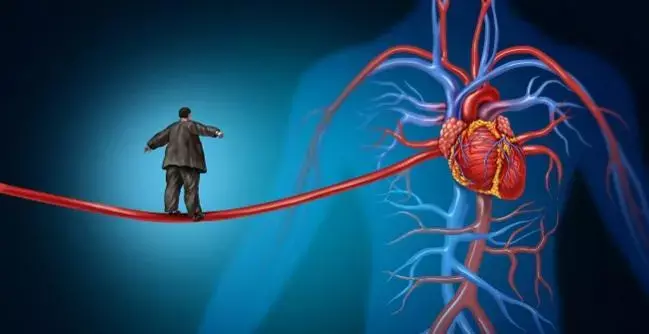- Home
- Medical news & Guidelines
- Anesthesiology
- Cardiology and CTVS
- Critical Care
- Dentistry
- Dermatology
- Diabetes and Endocrinology
- ENT
- Gastroenterology
- Medicine
- Nephrology
- Neurology
- Obstretics-Gynaecology
- Oncology
- Ophthalmology
- Orthopaedics
- Pediatrics-Neonatology
- Psychiatry
- Pulmonology
- Radiology
- Surgery
- Urology
- Laboratory Medicine
- Diet
- Nursing
- Paramedical
- Physiotherapy
- Health news
- Fact Check
- Bone Health Fact Check
- Brain Health Fact Check
- Cancer Related Fact Check
- Child Care Fact Check
- Dental and oral health fact check
- Diabetes and metabolic health fact check
- Diet and Nutrition Fact Check
- Eye and ENT Care Fact Check
- Fitness fact check
- Gut health fact check
- Heart health fact check
- Kidney health fact check
- Medical education fact check
- Men's health fact check
- Respiratory fact check
- Skin and hair care fact check
- Vaccine and Immunization fact check
- Women's health fact check
- AYUSH
- State News
- Andaman and Nicobar Islands
- Andhra Pradesh
- Arunachal Pradesh
- Assam
- Bihar
- Chandigarh
- Chattisgarh
- Dadra and Nagar Haveli
- Daman and Diu
- Delhi
- Goa
- Gujarat
- Haryana
- Himachal Pradesh
- Jammu & Kashmir
- Jharkhand
- Karnataka
- Kerala
- Ladakh
- Lakshadweep
- Madhya Pradesh
- Maharashtra
- Manipur
- Meghalaya
- Mizoram
- Nagaland
- Odisha
- Puducherry
- Punjab
- Rajasthan
- Sikkim
- Tamil Nadu
- Telangana
- Tripura
- Uttar Pradesh
- Uttrakhand
- West Bengal
- Medical Education
- Industry
High Uric acid and high CRP associated with increased risks of CVD

High Uric acid and high CRP are associated with increased risks of CVD suggests a new study published in the Nutrition, Metabolism and Cardiovascular Diseases.
Uric acid (UA) and C-reactive protein (CRP) may interact synergistically to accelerate the initiation and progression of cardiovascular disease (CVD). This study investigated the effects of a combination of high UA and high CRP on the risks of CVD. A total of 90 270 participants recruited from the Kailuan study were included, who were divided into four groups according to the presence/absence of hyperuricemia and inflammation. Cox regression was applied to evaluate the hazard ratios (HRs) and 95% confidence intervals (95% CIs) of CVD. C-statistics, net classification index (NRI) and integrated discrimination improvement (IDI) were used to compare the incremental predictive of UA, CRP and their combined effects on CVD. Mediation analysis was to explore the impact of CRP on the association between UA and CVD. Over a median follow-up of 14.95 years, we identified 11398 incident CVD cases.
Compared to the low UA/low CRP group, the high UA/low CRP, low UA/high CRP and high UA/high CRP groups showed progressively higher risks of CVD, HR(95% CI): 1.18(1.10-1.27), 1.27(1.21-1.33) and 1.50(1.33-1.69), respectively. The incorporation of UA and CRP into the traditional China-PAR model led to improvement in the C-statistic, NRI and IDI, and was better than incorporation of either UA or CRP alone. Mediation analysis showed that CRP mediated the association between UA and CVD, accounting for 11.57% of the total effects. High UA/high CRP is associated with increased risks of CVD. Incorporation of both UA and CRP provided additional value for risk stratification.
Reference:
Na Li, Shouling Wu, Rong Shu, Haicheng Song, Jierui Wang, Shuohua Chen, Wenhao Yang, Guodong Wang, Jingtao Yang, Xuemei Yang, Gary Tse, Nan Zhang, Liufu Cui, Tong Liu. The Combination of High Uric Acid and High C-reactive Protein Increased the Risk of Cardiovascular Disease: A 15-year Prospective Cohort Study. Published:February 05, 2024DOI:https://doi.org/10.1016/j.numecd.2024.01.027
Dr. Shravani Dali has completed her BDS from Pravara institute of medical sciences, loni. Following which she extensively worked in the healthcare sector for 2+ years. She has been actively involved in writing blogs in field of health and wellness. Currently she is pursuing her Masters of public health-health administration from Tata institute of social sciences. She can be contacted at editorial@medicaldialogues.in.
Dr Kamal Kant Kohli-MBBS, DTCD- a chest specialist with more than 30 years of practice and a flair for writing clinical articles, Dr Kamal Kant Kohli joined Medical Dialogues as a Chief Editor of Medical News. Besides writing articles, as an editor, he proofreads and verifies all the medical content published on Medical Dialogues including those coming from journals, studies,medical conferences,guidelines etc. Email: drkohli@medicaldialogues.in. Contact no. 011-43720751


